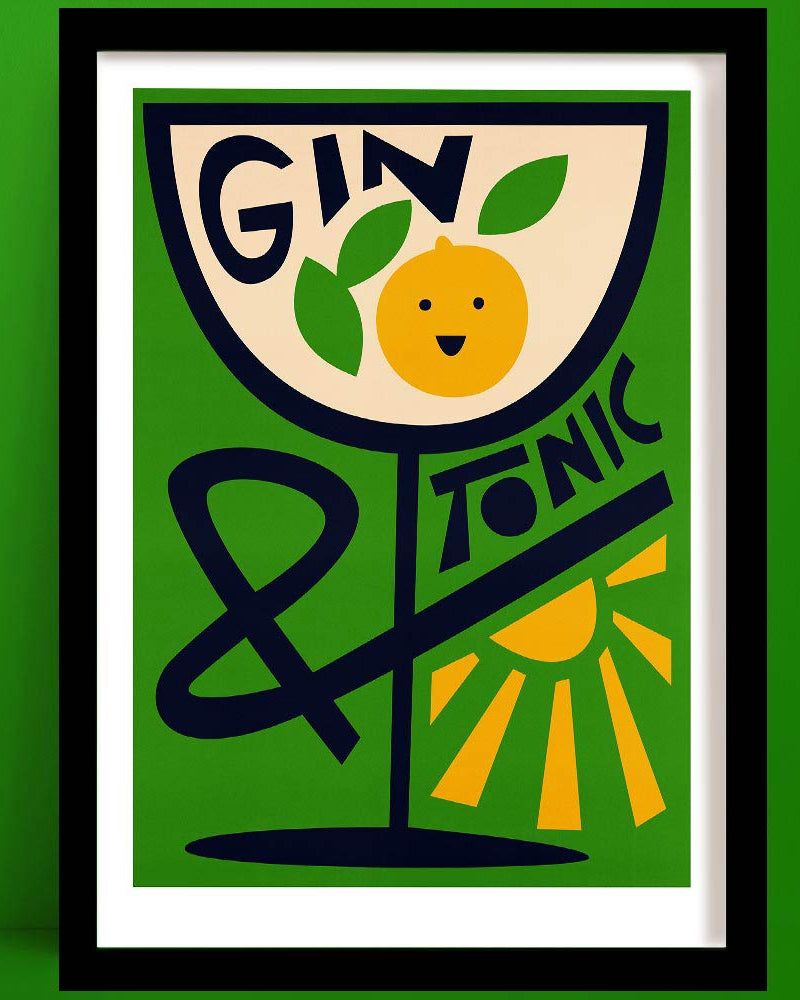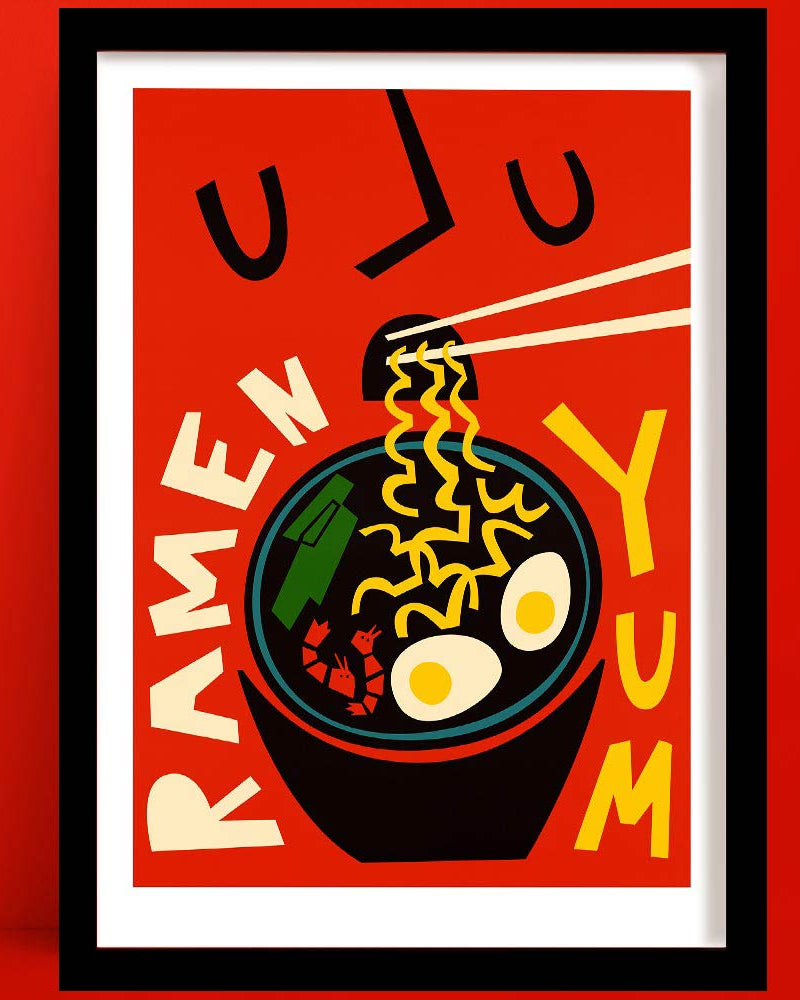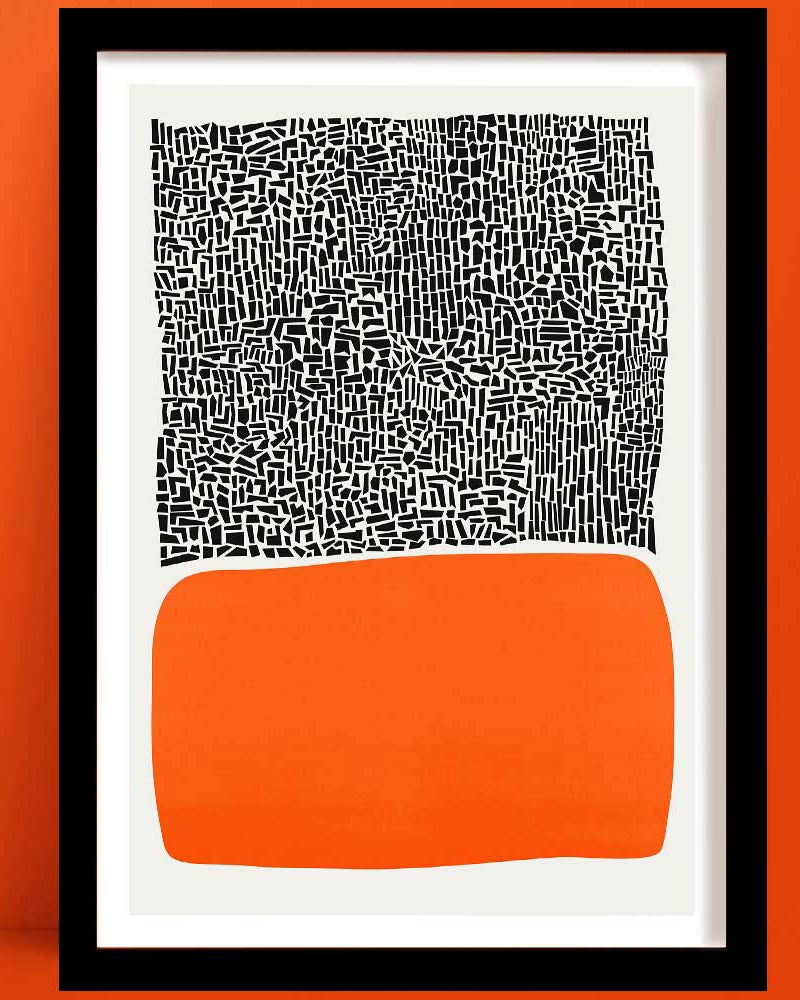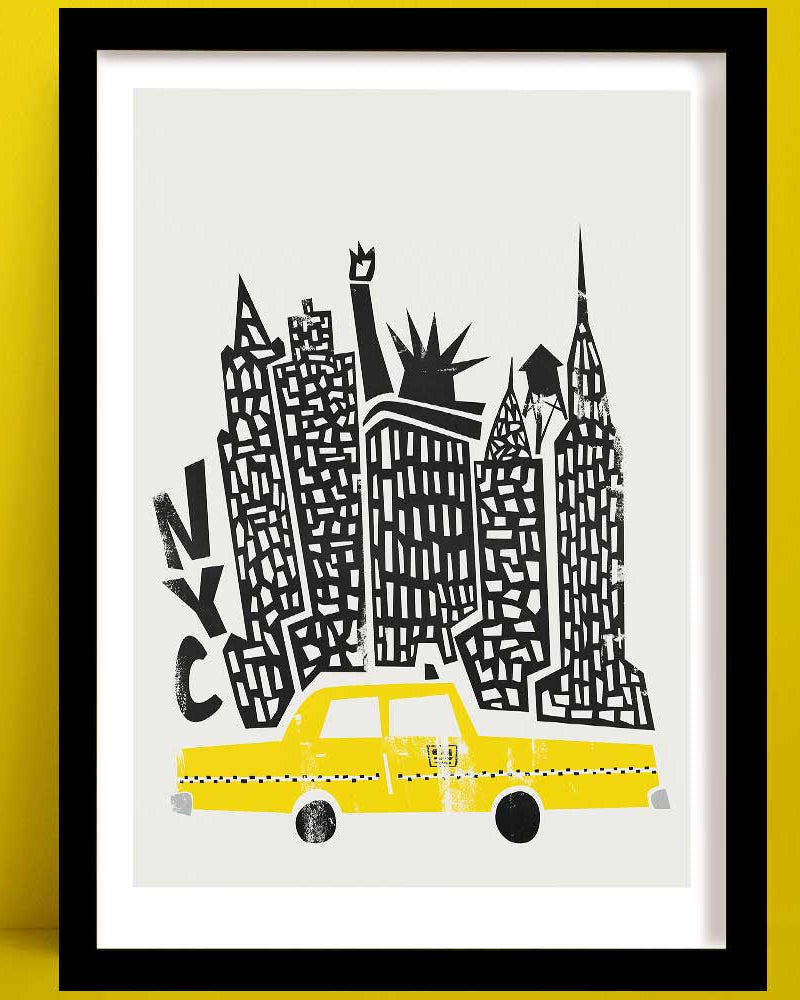When you first start to buy wall art for your home, the number of options available can be overwhelming. From deciding what size print to buy, to colours, frame types and placement, it can seem like there are endless decisions to be made.
We're here to make things a little bit simpler - read on to find some practical wall art tips that you can use to make getting started on your art journey a little easier.
Practical Tips for Buying Wall Art
What size wall art should I buy?
A general rule of thumb - the bigger the wall, the bigger the art. A second rule - the art is bigger in your head than it is in person. A good way to test this out is by mocking up the art size you're looking for in paper and using masking tape to stick it on your wall. You'll often find that you need a bigger piece.
When to go smaller:
- When a bigger piece won't fit in the space
- On a gallery wall
- Little nooks like a little corner or on a shelf
When to go bigger:
- When you have a big wall
- When you want to make a space feel bigger and more expansive

Should I go for a gallery wall or a statement piece?
If you're stuck between trying to create a gallery wall or going for a single statement piece, there isn't a right or wrong answer, but there are a couple of things to consider.
A gallery wall is trickier to pull off than choosing a single statement piece. That’s not to say don’t do it - gallery walls are awesome - just be prepared for a bit more trial and error, and a bit more thought upfront.
A statement piece *can* feel like a higher-stakes decision because it often involves a larger upfront investment. But keep in mind that the cost of framing multiple smaller prints can also add up quickly.
This is just my own opinion, but I find that gallery walls or clusters of artwork work particularly well in transition zones — hallways, stairwells, and entranceways. You're constantly on the move in these places and the visual rhythm of a gallery wall can both ground you (especially when the subjects are meaningful) and help you on your way.
Choose a Gallery Wall if:
- You have lots of interests or love collecting
- You already own art and want to give it a home
- You like jigsaw puzzles
Choose a Statement Piece if:
- You want to make your space feel bigger
- You’re easily overwhelmed by visual clutter
- You prefer to express your personality through furniture or objects
How high should I hang my art?
As a general rule, aim to hang art at eye level so it naturally sits within your line of sight. This helps the piece feel grounded in the space and easier to enjoy.
Of course, rules can be broken - for example, a wide panoramic piece can look great above a doorframe or high shelf. Just make sure it’s a deliberate choice, not an accident of poor planning.
What's the difference between a print, a poster, a canvas, and other types of wall art?
These terms usually refer to the materials and printing methods used. In general, a print tends to be higher quality than a poster - often using thicker paper and longer-lasting, pigment-based inks - but sometimes the terms are used interchangeably. For example, we sometimes refer to our work as both prints and posters - this is mostly to help people find us through Google search. But technically, all of our art available on the site is museum-quality giclée prints, made with archival paper and pigment inks for longevity and richness of colour.
Posters are often produced using thinner paper and dye-based inks, but not always. The best way to know what you’re getting is to check the materials listed.
Canvas art is printed on to canvas and stretched over a wooden frame, usually ready to hang. You can also find other types of wall art - printed on to metal, wood, or foam. Often these are also ready to hang. With these types of products, you just need to be mindful that they're exposed to the elements and may degrade over time.

How do I choose the right frame?
Framing might seem like a really daunting task, but it can be made easy. If you want to keep things simple - black, white and oak are the three most standard colours and will work well with most types of art. If you already feel overwhelmed by making a million choices about what, where, why, etc., please take this as permission to go with a simple frame choice. You'll notice that we have used black, white, and oak frames to show most of the prints on our shop in situ, because it's an easy starting point and most people will be able to imagine them in their homes from this. Most of the frames we use in our house are black. It's okay - you will still be a cool and trendy person, I promise.
There are also so many other options for framing, from ornate vintage frames to heavy dark wooden frames, to painting your own frames, to using coloured mats. You can do all these things if you want to - this is your house and your space. But don't feel like you have to - you can let the art speak for itself.
Should I match all my frames or mix and match?
This is a very personal choice. If you’re unsure, sticking with matching frames is a great starting point - it creates a clean look, helps things flow, and lets the art itself stand out.
As you grow more confident in your style, you might feel like experimenting - and you should! Over time, you’ll get a feel for what combinations work for you and your space.
Is it okay to use ready-made frames?
Absolutely. There are plenty of high-quality ready-made frames available, and they are a great, affordable option. Make sure you check the reviews before purchase. Often online framers will offer a great range of ready-made frames in standard sizes, which gives you a good balance between cost efficiency and craftsmanship.
Should I centre the art or align it with furniture?
Most of the time, aligning the art with furniture will look and feel more comfortable. Furniture acts as anchor points for the room, and the art will fit more naturally when it is aligned with a sofa or table rather than centred on a wall.
How do I know if a piece of art is good quality?
The materials used are your biggest clue. Look out for terms like giclée, archival, museum-quality, or pigment inks - these all point to high-quality materials and processes that result in a longer-lasting, more vibrant print.
Reviews are also helpful, and if the artist takes the time to explain what materials and techniques they use, it’s a strong sign they care deeply about their work.
It’s not always necessary to choose archival-grade art (though ours are museum-quality), but you do want to see that the artist or shop has been deliberate about what materials and processes they are using - it shows that they care about the work and the customer experience.
Final Thoughts
The process of decorating your home with art doesn't need to be overwhelming. I hope this guide has helped demystify some of the finer details, and if you want to go a bit more in depth you can look at our Framing Guide and Quality Guide for more information.




